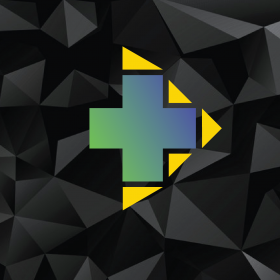PROBLEM
Medical history provides important information for medical facilities in order for them to provide better treatments and services.
In the Philippines, as well as other developing nations, there is a big problem of data exchange of patient information between healthcare facilities due to lack of connectivity and privacy concerns. In the rural areas, there is no access to the Internet that allows easy transfer of medical data. In addition, health facilities haven't established a standard for exchanging a patient's record as well as a means to get consent from a patient to allow the transfer.
Thus, when you go to a healthcare facility that doesn't have your health records, you are faced with the problem of redundant form filling and answering a long interview about your medical history. This is time-consuming and also causes inaccuracies in the information.
SOLUTION
We have developed TeleHealth, a system that allows the easy, patient-centric, and secure transfer of medical history between healthcare facilities.
With TeleHealth, a patient can go to a hospital that keeps his/her record and requests them to be transferred to his/her phone. This works by encrypting and converting essential patient data into Quick Response (QR) code.
The code can be read by the TeleHealth app to provide a copy in the app. This allows patients to be aware of their existing conditions, allergies, and the exact names of medications they are taking as well as in emergency situations where responders need to know their medical history.
If the patient needs to go to another facility that doesn't have his/her medical history, the app can initiate the transfer. The TeleHealth app can also create a QR code that allows it to transfer the data to another healthcare facility. In the process, consent is already embedded since the patient facilitated the transfer between hospitals.
All the information is kept and encrypted in the QR code and no internet or other communication system is needed to do this transfer of data. The encryption also protects the data from unauthorized access. What is more interesting is that the QR code can be printed by the patient, which allows him/her to have a backup of their medical records even without a smartphone.
MARKET
The success of TeleHealth depends on two markets: healthcare facilities and patients. The healthcare facilities would adopt the system so that they can allow the transfer of their records to the patient's smartphones. Consequently, the patients
would use the mobile application for the storage of their medical records and transferring data between facilities.
The target healthcare facilities for initial implementation are the public hospitals. These hospitals serve the majority of the citizens because they offer subsidized services. Moreover, they are all managed by the government, allowing the buy-in from only a single body for a large number of the target market. Revenue is generated through subscription fees from individual facilities, depending on their size.
They need TeleHealth because their individual facilities cannot offer as many services as their private counterparts. This makes a referral to other facilities a common use case. In addition, the public health care system does not have a centralized database of patient records, requiring them to either facilitate inter- facility data transfer or rely on the patient to facilitate the procedure.
The kind of patients that would greatly benefit from this venture are patients living in the rural areas. They invest a lot of time and money when they are asked to transfer to a different healthcare facility for treatment. It can take an average of two hours to travel between facilities and carrying the correct and complete record is necessary. The mobile app is free for patients to make the service accessible to underserved communities.
BENEFIT
This is useful in low resource situations where Internet connection or mobile phone signal is not available to transfer the data. A lot of medical facilities in Asia, especially in the ASEAN region are located in areas where there is no internet connection.
Also, TeleHealth is easy to deploy since it doesn’t need any complicated hardware or force healthcare facilities to migrate their systems. TeleHealth works on top as a service.
Finally, TeleHealth helps residents in rural areas. They are currently underserved, not only because of the limited access to facilities but also to information regarding their personal health. The app can be a useful tool to help patients be informed of their health.
TeleHealth provides a simple answer to the complex problem of interoperability between healthcare facilities in low resource areas. Having an easy and accurate way of transferring medical history is key to providing better treatments for patients in rural areas.
